
If your cookies keep coming out crisp instead of chewy, you’re definitely not alone. The difference between a soft, chewy cookie and a crunchy one often comes down to just a handful of tiny details. It’s not about following just any recipe—it’s about understanding what each ingredient does, and how a small tweak can totally change your results.
The truth is, most chewy cookies have more moisture in them. That means we’re looking at things like using more brown sugar instead of just white, adding a little extra egg yolk, and steering clear of overbaking. Get this stuff right, and you’ll end up with warm, bendy cookies instead of something that snaps in half.
- Why Cookies Turn Crunchy
- Key Ingredients for Chewiness
- Mixing and Baking Secrets
- Common Mistakes That Ruin Chewiness
- Troubleshooting for Next-Level Cookies
Why Cookies Turn Crunchy
Ever wonder why your cookies end up more like crackers? It usually boils down to moisture—or really, the lack of it. When cookies bake, water evaporates. Less moisture means more crunch. Recipes that use mostly white sugar, less fat, or not enough eggs will push your dough right into crunchy territory.
Let’s break down what specifically makes cookies come out crunchy instead of chewy:
- Sugar choice: White sugar dries cookies out because it doesn’t lock in moisture the way brown sugar does. Brown sugar also has molasses, which helps keep things moist and chewy.
- Fat content: Using only butter and skipping extra egg yolks can lead to dry, brittle cookies. Fats help cookies hold onto moisture.
- Baking time and temp: If you bake cookies too long or at a higher temperature, you’re cooking out moisture and leaving behind a crunchy result. Even just a minute or two extra makes a big difference.
- Thin dough: Spreading the dough too thin means it’ll bake faster—and dry out faster—leading to a crunchier bite.
| Ingredient | Result |
|---|---|
| White sugar | Crispy |
| Brown sugar | Chewy |
| All butter | Crunchy |
| Butter + Egg Yolk | Softer, chewier |
It’s not just about what goes in, but also how you mix, chill, and bake your dough. Too much mixing can toughen the dough, and skipping the chilling step can leave you with cookies that spread too thin and end up crisp. Tiny tweaks make a huge impact on cookie texture.
Key Ingredients for Chewiness
Chewy cookies basically come down to a handful of ingredients working together. Let’s break them down, so you can nail the chewy cookies texture instead of ending up with something brittle and dry.
1. Brown Sugar Beats White Sugar
If you want that chewy bite, brown sugar is non-negotiable. It holds more moisture because of its molasses content. Swapping out some or most of the white sugar for brown will make your cookies softer and chewier. A good rule is at least a 50/50 split, but some bakers swear by using only brown sugar for the ultimate chew.
2. Butter vs. Shortening
Butter brings flavor but also water, which keeps things moist. Melting the butter before you add it amps up the tenderness, but if you go all shortening, your cookies get fluffy and dry. Stick with butter—melted if you want maximum chew—rather than margarine or shortening.
3. Egg Yolks Matter
If you want chewy and not cakey cookies, more yolks help. They add richness and bind everything together without piling on fluff. You can try a full egg plus an extra yolk, especially if your cookies often come out on the crunchy side.
4. Add a Touch of Corn Syrup or Honey
This might sound wild, but a tablespoon or two of corn syrup or honey locks in moisture and helps with that shiny crackled top. Don’t go overboard, though, or your dough will turn sticky fast.
5. Flour Makes a Difference
Go for all-purpose flour. Cake flour gets you a softer crumb but can make things too cakey, not chewy. Also, try not to overdo it with flour—packing your measuring cup will dry out your dough and ruin that bendy texture.
6. Don’t Forget Salt and Vanilla
Salt might not change chewiness, but it balances out the sweet, and vanilla boosts everything. Use real vanilla extract if you can, since it plays well with brown sugar’s caramel vibes.
Get these key ingredients right, and you’re already halfway to the perfect chewy cookie. Tiny changes can make a huge difference, so don’t be afraid to experiment with your go-to recipe and see what gives you the chew you crave.
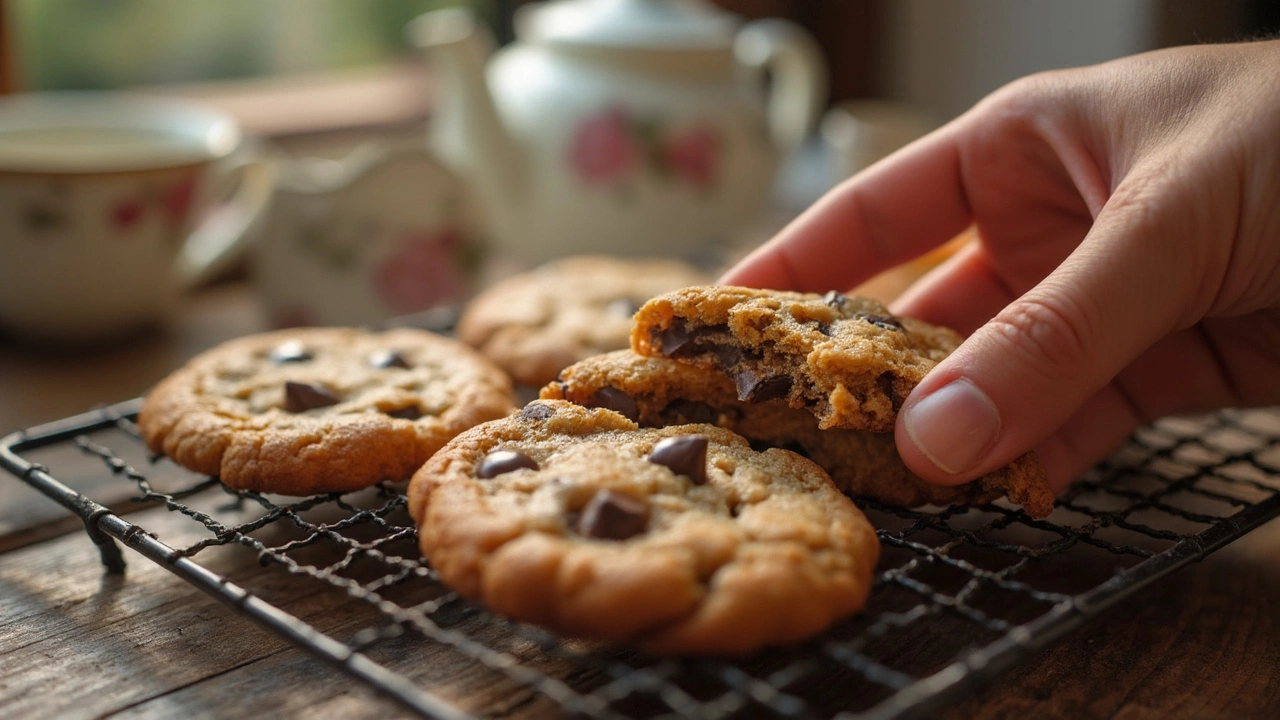
Mixing and Baking Secrets
The way you mix and bake your dough can totally make or break your dreams of chewy cookies. First up, don’t overmix your dough—too much stirring works the gluten, and that’s a one-way ticket to tough, cakey cookies. Once your dry ingredients are just barely blended into your wet ones, put down the spatula. It’s okay if you see some streaks of flour lurking in there; they’ll disappear in the oven.
Temperature is another game-changer. If you chill your dough for at least 30 minutes, you slow down how quickly the cookies spread out in the oven. Less spread means a thicker, chewier bite. You can even leave the dough in the fridge overnight; it helps the flavors develop, too.
When it’s finally time to bake, preheat your oven so it’s hot and ready—usually 350°F (175°C) is the sweet spot. Line your tray with parchment paper to keep things from sticking and help cookies bake more evenly. Don’t overcrowd the tray. Give each cookie room so air can circulate and heat can reach every edge.
- Pull your cookies from the oven when the edges are lightly golden and the centers look a tiny bit underdone. They’ll keep cooking as they cool, so if you leave them in until they look perfect, you’ll get crunchy instead of chewy.
- If you want bigger, chewier cookies, scoop out golf-ball-sized dough rounds. A thicker dough ball means a gooier center.
- Let your cookies rest on the tray for five minutes before transferring them. This helps them firm up just enough so they won’t fall apart.
One last thing—if you have a kitchen scale, use it for measuring. Precise ingredients mean fewer surprises, and you’re way more likely to end up with the chewy cookies you’re after.
Common Mistakes That Ruin Chewiness
You think your dough looks good, but your cookies come out more like crackers than treats? It happens all the time. Tiny slip-ups during mixing or baking turn chewy dreams into crunchy disappointments. Let’s break down why that happens—right from the actual kitchen blunders, not just old wives’ tales.
- Using Granulated Sugar Instead of Brown Sugar: Brown sugar is key for chewy cookies because it’s got molasses—meaning more moisture. If you swap it out, you lose that softness fast.
- Overbaking: This is where most people go wrong. Chewy cookies set and firm up as they cool, so pull them out when they still look a little underdone. Trust the process.
- Skipping the Rest Time: If you bake dough right away, the cookies spread too thin. Chilling lets everything meld, and helps keep cookies thick and chewy.
- Wrong Ratios: Too much flour stiffens the dough, making your results dry. Weigh your ingredients if you can—a cup of flour can weigh anywhere from 120 to 150 grams, and that 20 grams makes a huge difference.
- Baking Sheet Blunders: Hot pans or dark pans bake cookies quicker, drying them out. Always bake on a cool, light-colored sheet for best results.
Here’s a quick peek at what’s going wrong most often:
| Mistake | Chewiness Impact |
|---|---|
| Too much white sugar | Reduces moisture, makes cookies crisp |
| Overmixing dough | Toughens texture, less chew |
| Hot baking pans | Spreads dough too fast, dries out cookies |
| Baking too long | Makes the whole cookie crunchy |
| No dough chill | Cookies spread thin and crispy |
As cookbook legend Dorie Greenspan puts it,
“If your cookies are overbaked, don’t blame the recipe. Learn to trust your eyes, not just the timer. A chewy cookie might look barely set when it’s done, but that’s the sweet spot.”
If you tweak just one of these things, you’ll notice the difference. Skip the guessing game—just remember, the path to chewy cookies means keeping things moist, gentle, and never rushed.
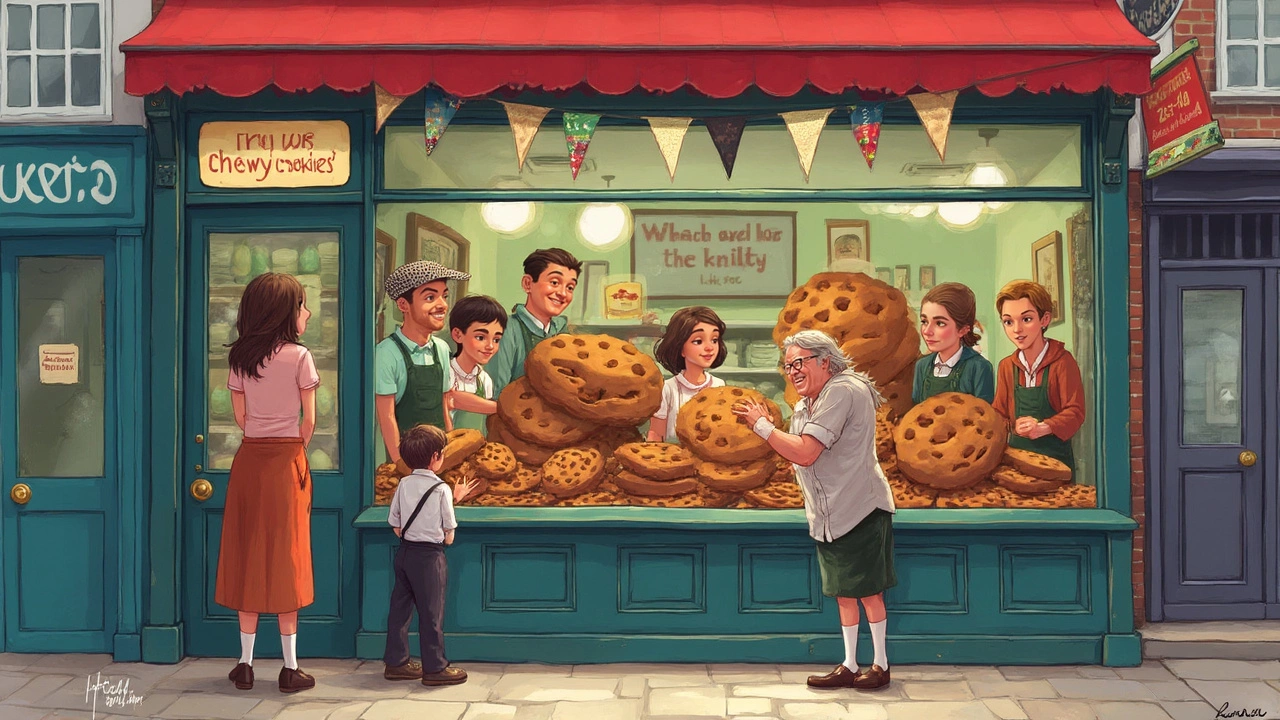
Troubleshooting for Next-Level Cookies
If your cookies are hitting the wrong texture and you’re not getting that perfect chewy cookies vibe, it’s time to check a few things. Most often, the fix is way simpler than you’d think. It’s usually about your ingredients, how long you bake, or even the basics like how you’re measuring.
- Too Flat or Too Puffy? That usually means your butter was either too soft (or melted), or the dough was overmixed. Use room temperature—not microwaved— butter. And mix just until the dough comes together.
- Rock-Hard Cookies? Overbaking is the main culprit here, even just a minute or two past golden can push a chewy cookie into crunchy territory. It helps to take cookies out when they still look a little soft in the middle. They keep baking on the tray after you pull them from the oven.
- Dough Spreading Too Much? That can be from not chilling the dough long enough, or from using a warm baking sheet. Try resting the dough in the fridge for at least 30 minutes. Also, always go with a cool or room temp sheet, not one straight out of the dishwasher.
- Taste is Off? Baking soda or baking powder might not be fresh, or your flour could be old. Tiny changes like switching to fresh brown sugar for extra moisture make a real difference.
Bakers have actually tested these tricks out. Back in 2021, a side-by-side kitchen test showed that dough rested overnight made cookies 30% chewier than dough baked right away. Pretty wild, right?
| Problem | Possible Fix |
|---|---|
| Cookies crispy instead of chewy | Add more brown sugar, reduce baking time, increase moisture |
| Dough spreading too thin | Chill dough thoroughly, use parchment paper, check butter temp |
| Cookies turning out bland | Use fresh vanilla, switch to salted butter, try dark brown sugar for flavor |
Don’t forget to check your oven’s temperature—some ovens run hot or cold and can sabotage even the best dough. An oven thermometer costs just a few bucks and can save you from a lot of guesswork.
So if your batch doesn’t come out chewy, don’t give up! Make one change at a time, and keep notes. Small tweaks, like switching sugar type or chilling longer, can totally save your next tray. Cookie baking is more of a science than you might think, but once you lock down your own formula, it’s pretty much impossible to go back.


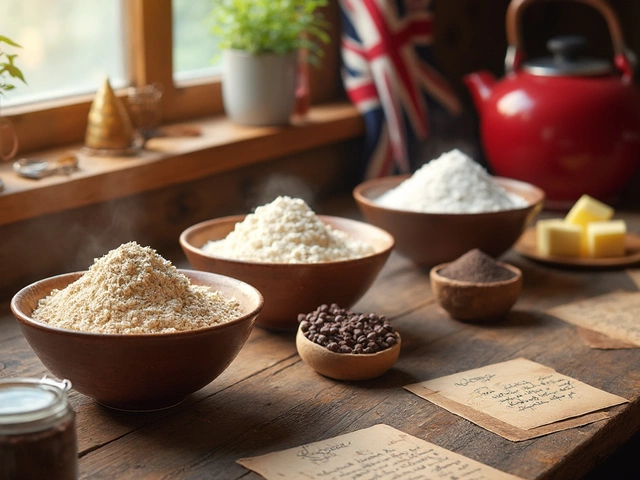





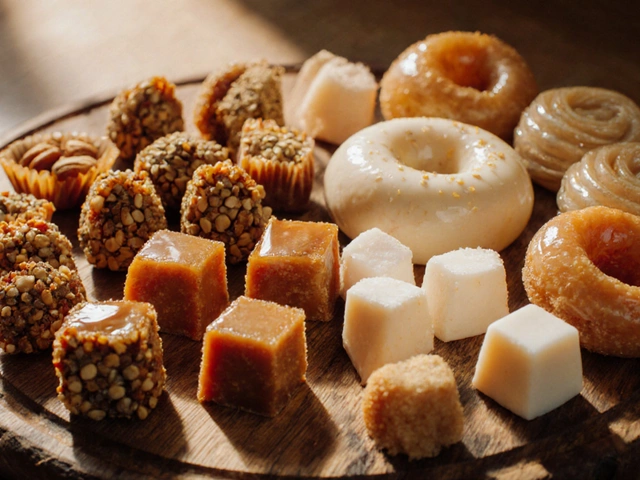
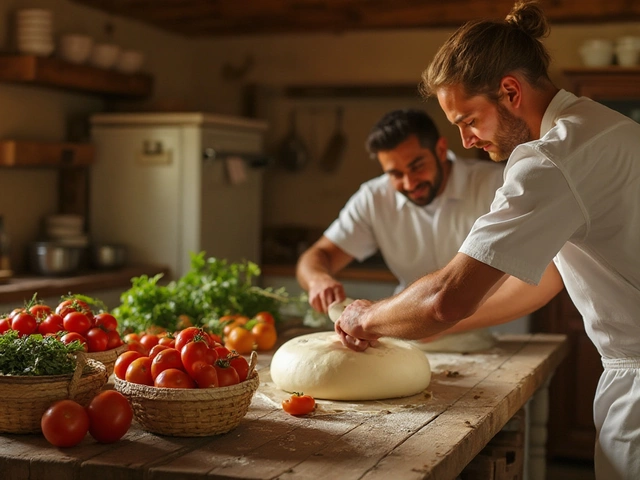


Write a comment